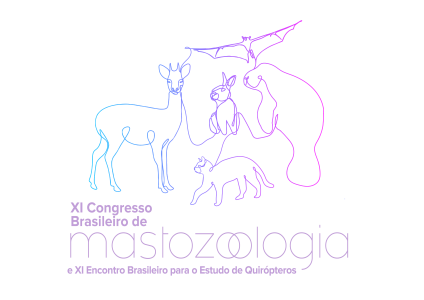Dados do Trabalho
Título:
BAT DIVERSITY AND USAGE OF HIGHWAY UNDERPASSES IN SOUTHEASTERN BRAZIL
Resumo:
Roads are social-economically important, as they drain products and integrate localities. However, they also cause ecological damages, including animals’ killing through vehicle-collisions, which affect terrestrial animals. Fauna passages are the main mitigation method proposed to reduce road mortality, including bats. However, few studies evaluated underpasses use by them. This study aims to verify if different underpass types, used by large mammals, can also be effective for bats. This study was conducted on two highways in western São Paulo state, Brazil. We monitored 35 underpasses from November 2017 to February 2021 using camera traps, in a total effort of ~27,360 h/underpass. For species identification, we selected the underpasses with more intense presence of bats. Capture was performed from 2 to 14 October 2020, in 14 underpasses of four different sizes and surrounding landscapes through mist nets and active search of diurnal roosts. Sampling effort was 3240 m2.h. Landscape structure was measured considering a 200-meter-radius buffer around each underpass sampled and landscape analyses were performed in ArcGis 10.8 and Fragstats 4.2. We estimated the diversity of bats using Shannon’s exponential index and Inverse Simpson’s index and compared between the structures using the Mann-Whitney U test. To assess the relationship between the richness and capture of bats, we performed multiple regression models. In the capture phase, a total of 207 bats belonging to 14 species were netted under or at the entrances of the 14 highway underpasses sampled. Round culverts held the largest colonies, and capture rate was not related to presence of water. Standardizing the richness and the number of captures by the number of each sampled structure, the bridge type was the structure that presented the greatest species richness, followed by the box culvert. Bridges proved to be important to house bat diversity, while round culvert and cattle box types presented larger abundances and low diversity of species. We end up with 32 concurrent models and the results of regression model indicate that for richness data, neither the type and size of the structure, nor the environmental variables can describe the pattern of species richness found. This is because in the model selection two null models were selected as being plausible to explain the richness found – the model where species richness occurs by chance and the geographic model, which indicates that closer passages are more likely to have more similar diversities. This is the first study assessing underpasses use by bats in Brazil, and that estimated bats underpass preference. This study can serve as a basis for the design of new studies investigating this topic further. Our results found a high usage of underpasses by bats, with box culverts presenting the best richness and capture rates, when compared to the other types. Thus, new studies need to be conducted to determine whether there really exists a preference in the use or if this use is conditioned by other factors not evaluated in this study, such as the composition of the surrounding bat community and landscape dynamics.
Financiamento:
Área
Ecologia
Autores
Guilherme Siniciato Terra Garbino, Fernanda Delborgo Abra, Beatriz Lopes, Leticia Munhoes, Vinicius José Alves Pereira, Pablo Campregher, Paula Ribeiro Prist
